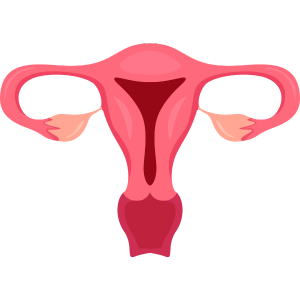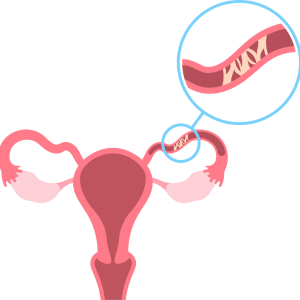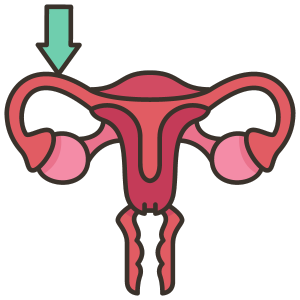 What is Fallopian Tube Blockage?
What is Fallopian Tube Blockage?
Fallopian tube blockage occurs when one or both of the fallopian tubes are obstructed, preventing the egg from traveling from the ovary to the uterus. These tubes are vital for conception as they provide a pathway for sperm to fertilize the egg. When blockage happens, it can lead to infertility because the egg cannot reach the uterus for implantation.
Symptoms of fallopian tube blockage may include chronic pelvic pain, irregular menstrual cycles, and difficulty getting pregnant despite regular unprotected intercourse. Diagnosis often involves imaging tests such as hysterosalpingography (HSG) or laparoscopy to visualize the tubes and identify blockages.
For effective management and specialized treatment, individuals should consider consulting with an IVF center in Visakhapatnam. These centers offer advanced diagnostic methods and personalized care to improve fertility outcomes, providing options for conception despite fallopian tube blockages.
 Causes of Fallopian Tube Blockage
Causes of Fallopian Tube Blockage
Several factors can contribute to the blockage of fallopian tubes, affecting female fertility treatment:
• Pelvic Inflammatory Disease (PID): This is a common cause of fallopian tube blockage, usually resulting from untreated sexually transmitted infections (STIs) such as gonorrhea or chlamydia. PID causes inflammation and scarring of the fallopian tubes, leading to obstruction.
• Endometriosis: Endometriosis is a condition where tissue similar to the lining of the uterus grows outside the uterus. If this tissue involves the fallopian tubes, it can cause adhesions and blockages, affecting fertility.
• Previous Pelvic Surgery: Surgeries in the pelvic area, including surgeries on the fallopian tubes themselves, can cause scar tissue formation. This scar tissue may obstruct the fallopian tubes, preventing the egg from passing through.
• Ectopic Pregnancy: An ectopic pregnancy occurs when a fertilized egg implants outside the uterus, often in a fallopian tube. This can cause damage to the tube, leading to blockage.
• Congenital Abnormalities: Some women may have structural abnormalities in their fallopian tubes from birth, which can predispose them to blockages.
 Symptoms of Fallopian Tube Blockage
Symptoms of Fallopian Tube Blockage
Fallopian tube blockage can manifest with various symptoms, although some women may not experience any noticeable signs until they try to conceive. Common symptoms include:
• Pelvic Pain: Chronic or intermittent pelvic pain, which may worsen during menstruation or sexual intercourse.
• Irregular Menstrual Cycles: Changes in menstrual flow or irregular periods may occur due to hormonal imbalances associated with fallopian tube blockage.
• Painful Menstruation: Dysmenorrhea (painful periods) can be a symptom, often associated with underlying conditions like endometriosis or pelvic inflammatory disease (PID).
• Pain during Ovulation: Some women may experience pain or discomfort around the time of ovulation, known as mittelschmerz, which could indicate issues with fallopian tubes.
• Difficulty Conceiving: Inability to conceive despite regular unprotected intercourse for over a year may suggest fallopian tube blockage or other fertility issues.
It’s important to note that these symptoms can overlap with other gynaecological conditions, making a thorough medical evaluation crucial for accurate diagnosis.
 Diagnosis of Fallopian Tube Blockage
Diagnosis of Fallopian Tube Blockage
Diagnosing fallopian tube blockage typically involves a combination of medical history review, physical examination, and diagnostic tests:
• Medical History and Physical Examination: Your healthcare provider will inquire about your menstrual history, pelvic pain, and any previous reproductive health issues. A pelvic exam may reveal tenderness or abnormalities that could indicate blockage.
• Imaging Tests: Several imaging techniques can help visualize the fallopian tubes:
◦ Hysterosalpingography (HSG): This procedure involves injecting a contrast dye into the uterus and fallopian tubes while taking X-ray images. The dye outlines the shape and structure of the tubes, revealing any blockages or abnormalities.
◦ Transvaginal Ultrasound: A specialized ultrasound probe is inserted into the vagina to create images of the pelvic organs. While it may not directly visualize the fallopian tubes, it can detect indirect signs of blockage or abnormalities.
◦ Sonohysterography: Similar to HSG, this procedure involves injecting saline solution into the uterus and fallopian tubes to enhance ultrasound imaging.
• Laparoscopy: In cases where other diagnostic tests are inconclusive or further evaluation is needed, laparoscopy may be performed. It involves inserting a thin, lighted tube (laparoscope) through a small incision near the navel to directly visualize the pelvic organs, including the fallopian tubes.
 Preventive Measures and Lifestyle Changes
Preventive Measures and Lifestyle Changes
While some causes of fallopian tube blockage, such as congenital factors or unavoidable infections, cannot be prevented, there are steps individuals can take to potentially reduce their risk:
• Practice Safe Sex: Using condoms can help prevent sexually transmitted infections (STIs) like gonorrhea and chlamydia, which are significant contributors to pelvic inflammatory disease (PID) and subsequent fallopian tube blockage.
• Seek Prompt Treatment for Infections: If you suspect you have an STI or any pelvic infection, seek medical attention promptly. Early treatment can help prevent the spread of infection and reduce the risk of long-term complications.
• Maintain Good Hygiene: Practicing good hygiene habits, such as washing genital areas before and after intercourse, can help reduce the risk of infections that could lead to fallopian tube damage.
• Avoidance of Risky Behavior: Avoiding behaviors that increase the risk of STIs, such as having multiple sexual partners or engaging in unprotected sex, can lower the likelihood of developing PID and subsequent fallopian tube blockage.
• Manage Endometriosis and Other Conditions: If you have been diagnosed with conditions like endometriosis that can affect the fallopian tubes, working closely with healthcare providers to manage these conditions effectively can reduce the risk of complications.
Conclusion
Fallopian tube blockages can be caused by various factors such as pelvic inflammatory disease, endometriosis, or previous surgeries. Treatment options range from minimally invasive procedures to surgery, depending on the severity and cause of the blockage. Early diagnosis and appropriate management are crucial for improving fertility outcomes in affected individuals. Consulting an infertility specialist in Vizag can provide specialized care and personalized treatment plans tailored to address these challenges effectively.
